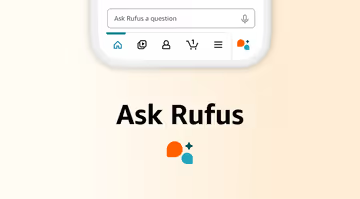Shoppen mit ChatGPT
Lässt man OpenAIs Marketing beiseite, erkennt man eindeutig den ersten Schritt in Richtung Werbegeschäft.
Pünktlich zum Q4-Start hat OpenAI gestern sein erstes Shopping-Tool namens Instant Checkout gelauncht. Dabei geht es allerdings nicht um Agentic Commerce, denn der Nutzer muss jeden einzelnen Schritt im besagten Checkout bestätigen. Dieser ist zunächst nur in den USA und nur für ausgewählte Verkäufer auf Etsy und Shopify (man beachte: weder Amazon noch Walmart) verfügbar. Laut ihrem Blogpost zur Ankündigung funktioniert er so:
When someone asks a shopping question—“best running shoes under $100” or “gifts for a ceramics lover” — ChatGPT shows the most relevant products from across the web. Product results are organic and unsponsored, ranked purely on relevance to the user.
If a product supports Instant Checkout, users can tap “Buy,” confirm their order, shipping, and payment details, and complete the purchase without ever leaving the chat. Existing ChatGPT subscribers can pay with their card on file, or other card and express payment options.
Orders, payments, and fulfillment are handled by the merchant using their existing systems. ChatGPT simply acts as the user’s AI agent—securely passing information between user and merchant, just like a digital personal shopper would.
Merchants pay a small fee on completed purchases, but the service is free for users, doesn’t affect their prices, and doesn’t influence ChatGPT’s product results. Instant Checkout items are not preferred in product results. When ranking multiple merchants that sell the same product, ChatGPT considers factors like availability, price, quality, whether a merchant is the primary seller, and whether Instant Checkout is enabled, to optimize the user experience.
Auf den ersten Blick erscheint die genannte "small fee" – aka die Affiliate Fee, über die ich erst letzte Woche hier wieder geschrieben habe – wie das offensichtliche Geschäftsmodell. Viel wichtiger sind jedoch die Transaktionsdaten, die OpenAI dadurch gewinnt. Eric Seufert hat es in seinem Beitrag auf den Punkt gebracht:
While Instant Checkout may only appeal to a specific swath of the eCommerce merchant base, the data it gleans from facilitating transactions — data which can be attached to individual, logged-in ChatGPT user profiles — is enormously valuable for ad targeting. At the margin, Facebook and Instagram Shops checkout data for Meta likely didn’t add more value than the data it captured via CAPI and potentially even introduced friction to the checkout process. But OpenAI doesn’t have a CAPI; it needs to bootstrap a data acquisition mechanism for user targeting. And user query data isn’t enough: it captures intent but not ability, appeal but not preference. Instant Checkout can work for OpenAI even where the same approach failed for Meta because OpenAI has to start somewhere to aggregate transaction data.
Anders formuliert: Wenn OpenAI eine Werbefläche anbieten möchte, die mit Google und Meta konkurrieren kann, müssen sie nicht nur wissen, wer ihre Nutzer sind (Alter, Geschlecht, Standort etc.) und wofür sie sich interessieren, sondern auch, was sie tatsächlich kaufen. Ohne diese Information ist ihr Targeting nicht nur leicht, sondern um Welten schlechter. Damit wären sie kaum attraktiver als Snapchat, Pinterest und all die anderen Werbeplattformen, die es über die Jahre nie geschafft haben, eine relevante Alternative zum Duopol von Meta und Google bereitzustellen. Ob diese Strategie aufgeht, bleibt abzuwarten. Denn zuerst müssen Nutzer innerhalb von ChatGPT eines tun: Kaufen.

